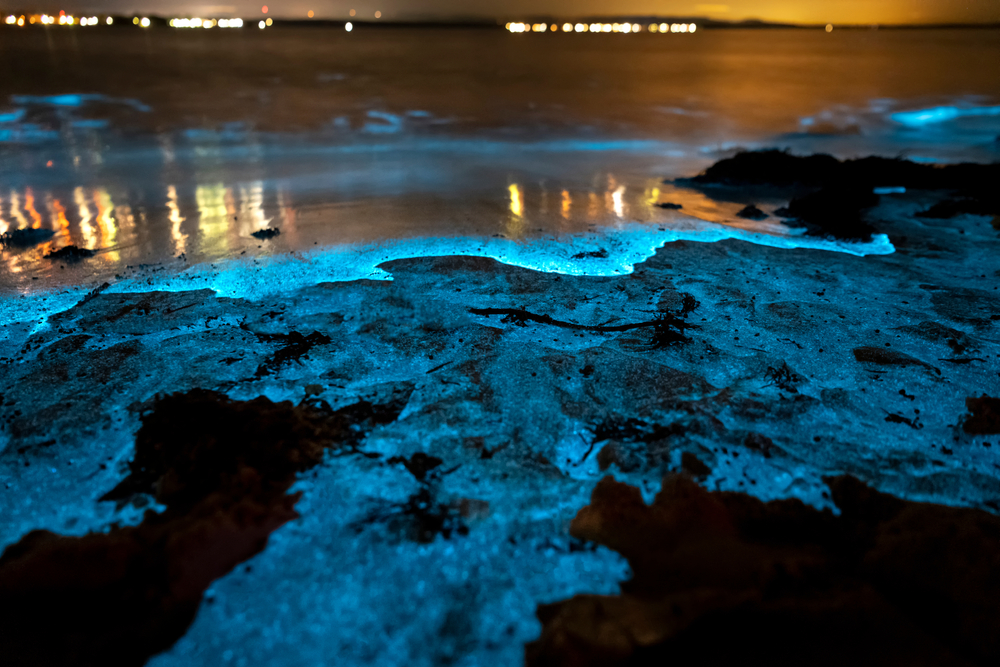The Allure of Bioluminescent Landscaping: Nature's Living Light
In a world where technology often dominates our living spaces, a captivating trend is emerging that marries the wonders of nature with innovative design: bioluminescent landscaping. This enchanting approach to outdoor aesthetics is transforming gardens into mesmerizing nocturnal displays, offering a sustainable and magical alternative to traditional lighting solutions.

The Science Behind the Glow
Bioluminescence, the production and emission of light by living organisms, is a fascinating natural phenomenon. In the wild, it’s observed in various species, from fireflies to deep-sea creatures. This biological process involves a chemical reaction where luciferin, a light-emitting compound, is oxidized by the enzyme luciferase, resulting in the release of energy in the form of light.
For years, scientists have been studying ways to harness this natural light-producing ability for practical applications. In landscaping, the focus has been on developing plants that can emit light or incorporating bioluminescent organisms into garden designs. While genetically modified glowing plants are still in the research phase, landscape designers are finding creative ways to integrate naturally bioluminescent organisms into outdoor spaces.
Bioluminescent Organisms in Garden Design
One of the most accessible ways to introduce bioluminescence to a garden is through the use of bioluminescent fungi. Species like Panellus stipticus, commonly known as the bitter oyster mushroom, emit a soft green glow in the dark. These fungi can be cultivated on logs or stumps, creating ethereal focal points in shaded areas of the garden.
Algae are another popular choice for bioluminescent landscaping. Certain species of dinoflagellates, microscopic marine organisms, produce a blue glow when agitated. Innovative designers are incorporating these tiny light-producers into water features, creating stunning displays that respond to movement and water flow.
Techniques and Applications
Implementing bioluminescent elements in landscaping requires careful planning and a deep understanding of the organisms’ needs. For fungi, this means creating the right conditions for growth, including proper moisture levels and shade. Algae-based features often involve specially designed containers or ponds that maintain the ideal environment for these delicate organisms.
Pathways and borders are prime locations for bioluminescent landscaping. Imagine a walkway lined with glowing mushrooms, guiding your steps with a soft, natural light. Water features, from small ponds to elaborate fountains, can be transformed into living light shows with the addition of bioluminescent algae.
The Impact on Outdoor Living
Bioluminescent landscaping is more than just a visual spectacle; it’s reshaping how we interact with our outdoor spaces after dark. Traditional outdoor lighting often creates harsh contrasts and can disrupt local wildlife. In contrast, the soft, organic glow of bioluminescent elements provides gentle illumination that enhances the natural beauty of the garden without overwhelming it.
This approach to nighttime landscaping is particularly appealing for those seeking to create immersive, magical experiences in their outdoor spaces. It’s perfect for meditation gardens, where the subtle light encourages relaxation and connection with nature. For entertainers, bioluminescent features become conversation starters, adding an element of wonder to evening gatherings.
Sustainability and Eco-Friendly Benefits
One of the most compelling aspects of bioluminescent landscaping is its alignment with sustainable design principles. Unlike traditional lighting systems that consume electricity and contribute to light pollution, bioluminescent organisms produce light through natural processes, requiring minimal external energy input.
Moreover, incorporating these living light sources into gardens can enhance biodiversity and support local ecosystems. Bioluminescent fungi, for example, play crucial roles in decomposition and nutrient cycling. By creating habitats for these organisms, gardeners contribute to the health of their local environment while enjoying the aesthetic benefits.
Challenges and Considerations
While the concept of bioluminescent landscaping is undeniably appealing, it comes with its own set of challenges. Maintaining the right conditions for bioluminescent organisms requires dedication and expertise. Factors like temperature, humidity, and pH levels must be carefully monitored and controlled to ensure the health and luminosity of these living light sources.
Additionally, the intensity of light produced by natural bioluminescence is often subtle, which may not meet all lighting needs in a garden. As such, bioluminescent elements are typically used as accent lighting or in combination with other low-impact lighting solutions.
The Future of Glowing Gardens
As research in biotechnology advances, the possibilities for bioluminescent landscaping continue to expand. Scientists are working on developing plants with bioluminescent properties, which could revolutionize how we light our outdoor spaces. Imagine trees that glow softly at night or flowers that shimmer with an inner light.
The intersection of this technology with smart home systems also presents exciting possibilities. Future gardens might feature bioluminescent elements that respond to environmental cues or can be controlled via smartphone apps, allowing for dynamic, evolving nightscapes.
Embracing Nature’s Luminous Magic
Bioluminescent landscaping represents a harmonious blend of nature’s wonders and human creativity. It offers a unique way to bring light into our outdoor spaces while fostering a deeper connection with the natural world. As this trend continues to evolve, it promises to transform our gardens into living, breathing works of art that captivate and inspire long after the sun has set.
For those willing to embrace innovation and nurture these living lights, bioluminescent landscaping opens up a world of possibilities. It’s more than just a design choice; it’s a commitment to exploring the boundaries of what’s possible in outdoor aesthetics and sustainability. As we look to the future of home and garden design, the gentle glow of bioluminescence beckons, inviting us to reimagine our relationship with light and nature in our most personal spaces.





